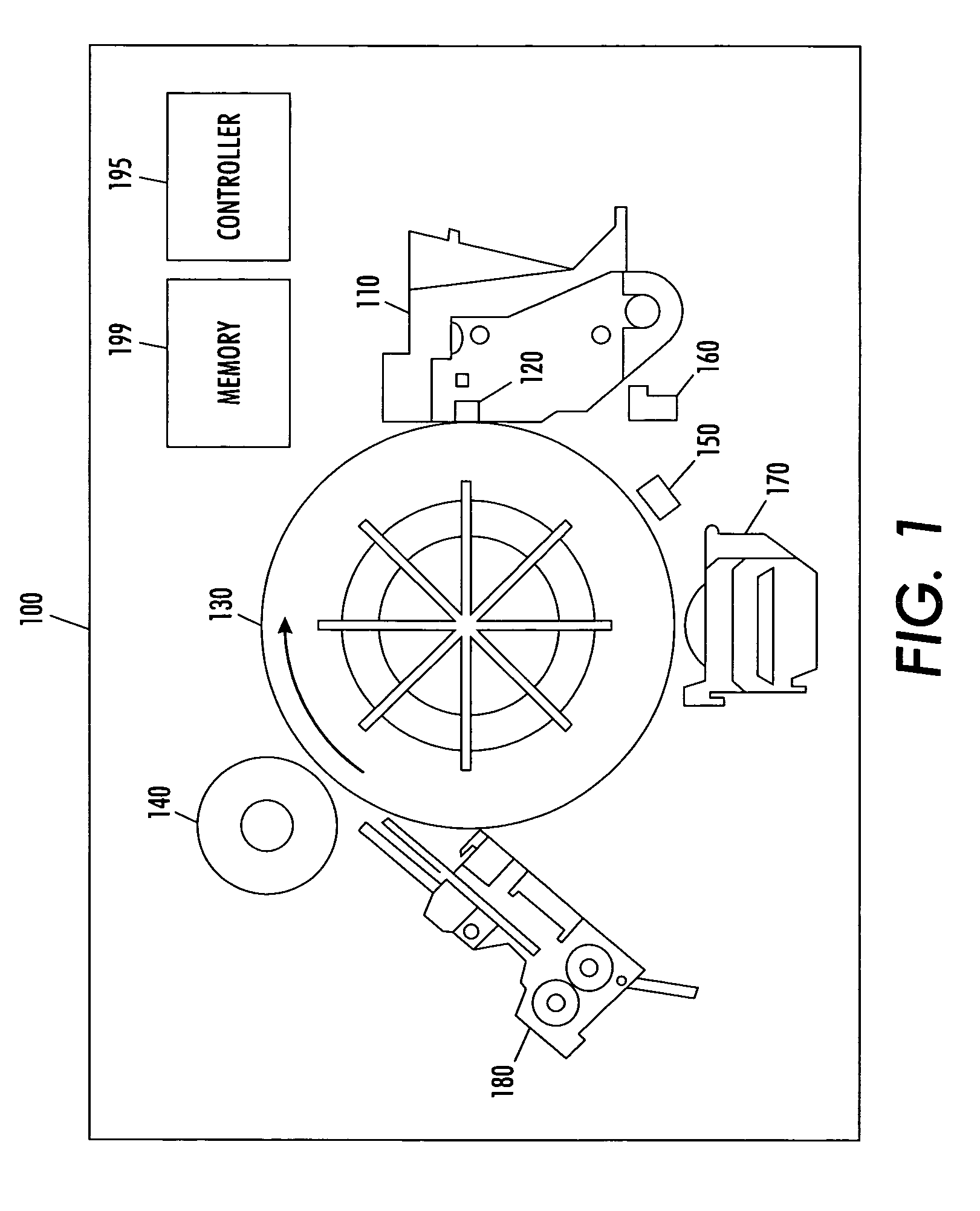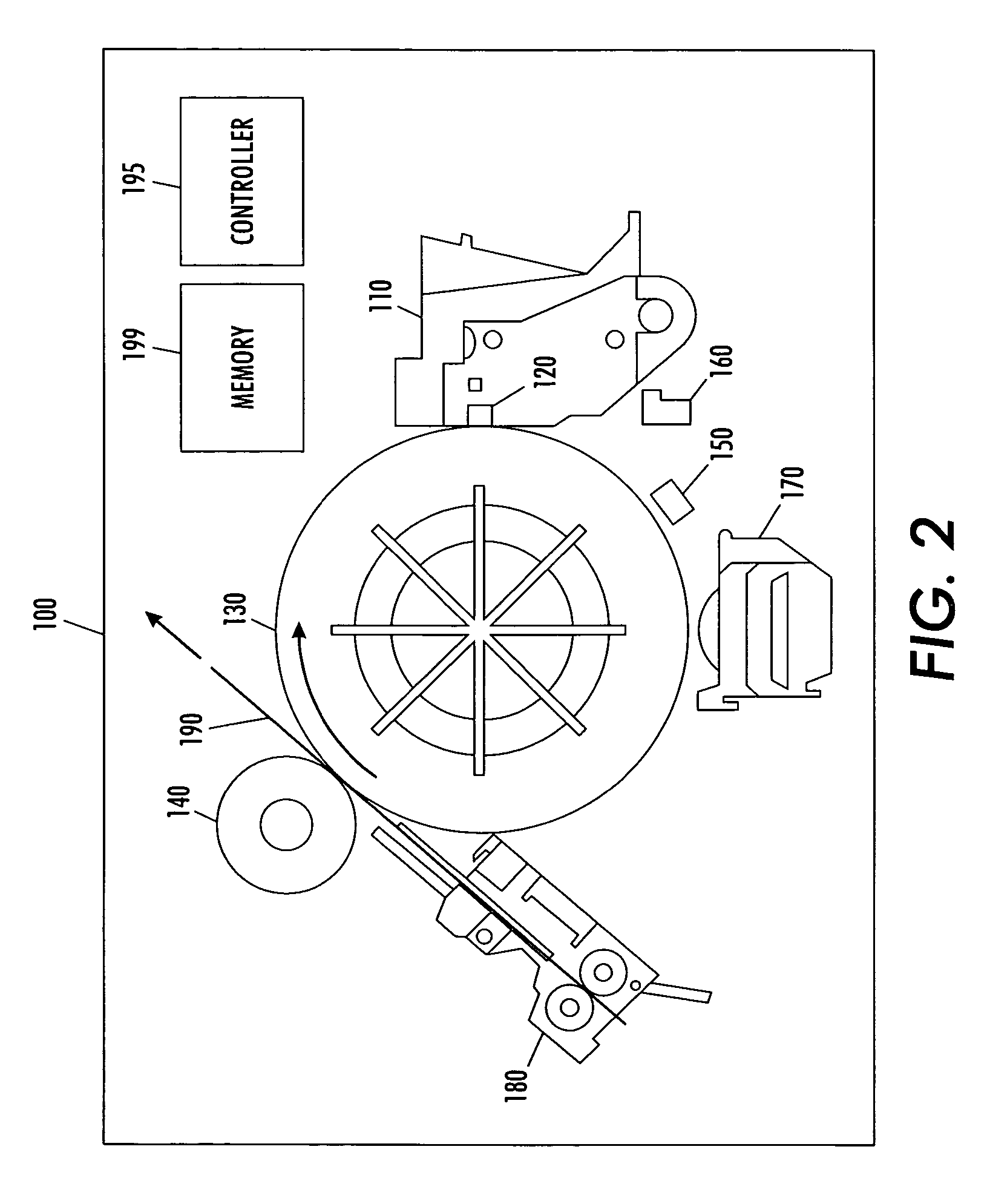Systems and methods for detecting inkjet defects
a technology of inkjet image and defect detection, applied in the field of systems and methods for inkjet image defect detection, can solve the problems of inkjet defect detection inkjet defect detection with an iod as a standalone procedure, and inkjet defect detection without the most efficient system solution, so as to save time, ink and other precious system resources, and reduce wasted system resources.
- Summary
- Abstract
- Description
- Claims
- Application Information
AI Technical Summary
Benefits of technology
Problems solved by technology
Method used
Image
Examples
Embodiment Construction
[0029]For a general understanding of an inkjet device, such as, for example, a solid inkjet printer, an ink-jet printer, or an inkjet facsimile machine, in which the features of this invention may be incorporated, reference is made to FIGS. 1-3. Although the various exemplary embodiments of this invention for detecting inkjet defects are particularly well adapted for use in such a machine, it should be appreciated that the following exemplary embodiments are merely illustrative. Rather, aspects of various exemplary embodiments of this invention may be achieved in any media feed mechanism and / or image reproduction device containing at least one print head with inkjets intended to transfer an image onto an intermediate image substrate.
[0030]As shown in FIG. 1, the exemplary inkjet device 100 includes, in part, a print head 110, one or more inkjets 120, an intermediate transfer substrate (intermediate transfer drum 130), a transfer roller 140, an image sensor 150, a print head maintena...
PUM
 Login to View More
Login to View More Abstract
Description
Claims
Application Information
 Login to View More
Login to View More - R&D
- Intellectual Property
- Life Sciences
- Materials
- Tech Scout
- Unparalleled Data Quality
- Higher Quality Content
- 60% Fewer Hallucinations
Browse by: Latest US Patents, China's latest patents, Technical Efficacy Thesaurus, Application Domain, Technology Topic, Popular Technical Reports.
© 2025 PatSnap. All rights reserved.Legal|Privacy policy|Modern Slavery Act Transparency Statement|Sitemap|About US| Contact US: help@patsnap.com



